Desert. To most of you that word calls up images of sandy desolation, no water, and no life. If you’re a meteorologist, it means less than 10 inches of annual rainfall. But to a wildlife photographer, it means charismatic critters you won’t see anywhere else. And in the fall and spring shoulder seasons, it won’t be scorching hot either.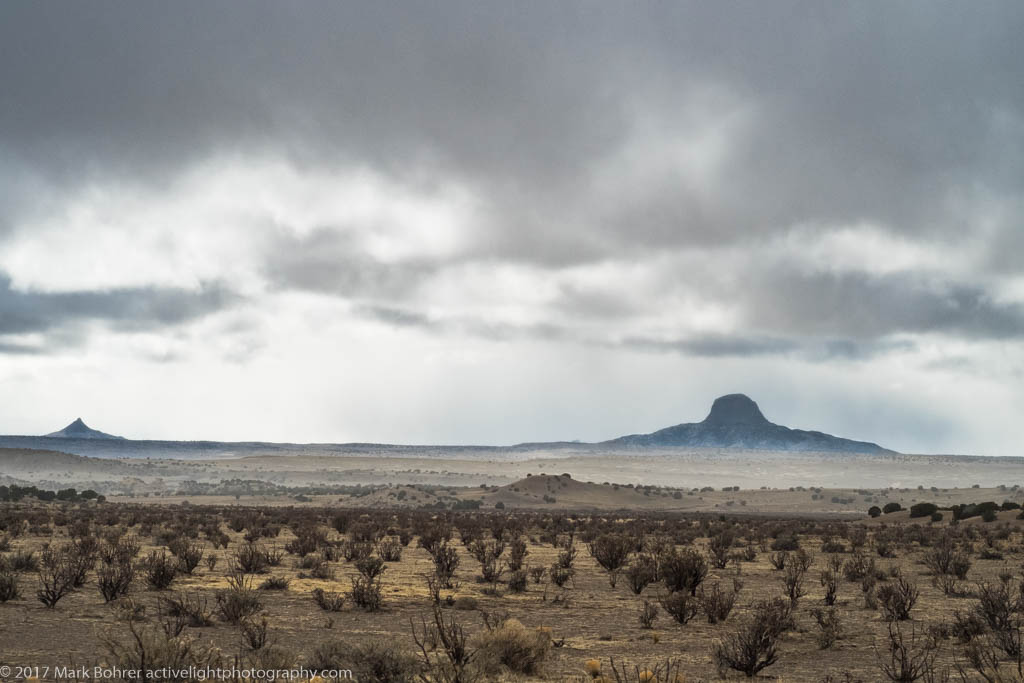 Uniform Plant Distribution, Cabezon Peak, New Mexico A Uniform Distribution A desert’s limited resources put everything a uniform distance apart. Too close together, and wild things would kill each other off sucking up all the water and food. Instead, everybody spreads out and develops strategies to survive. 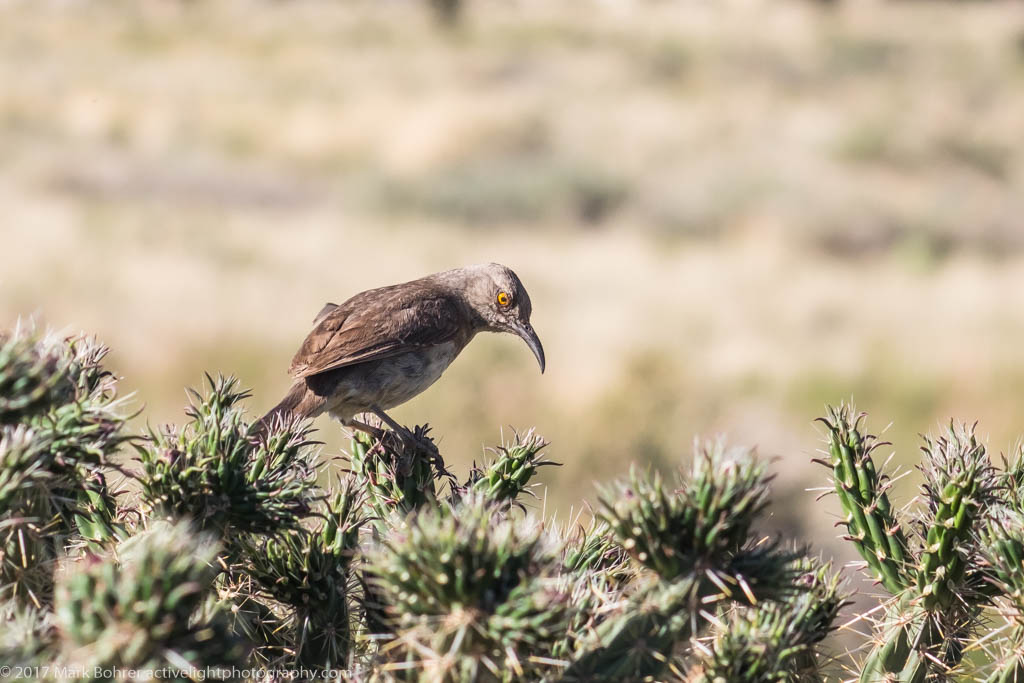 Curve-billed thrasher in cane cholla, Sandia foothills, New Mexico Protection Spines on cane cholla and prickly pear evolved from leaves, and stems got large to absorb sunlight and photosynthesize instead. Then it became possible for birds to hide in the spiny plants, keeping predators away. 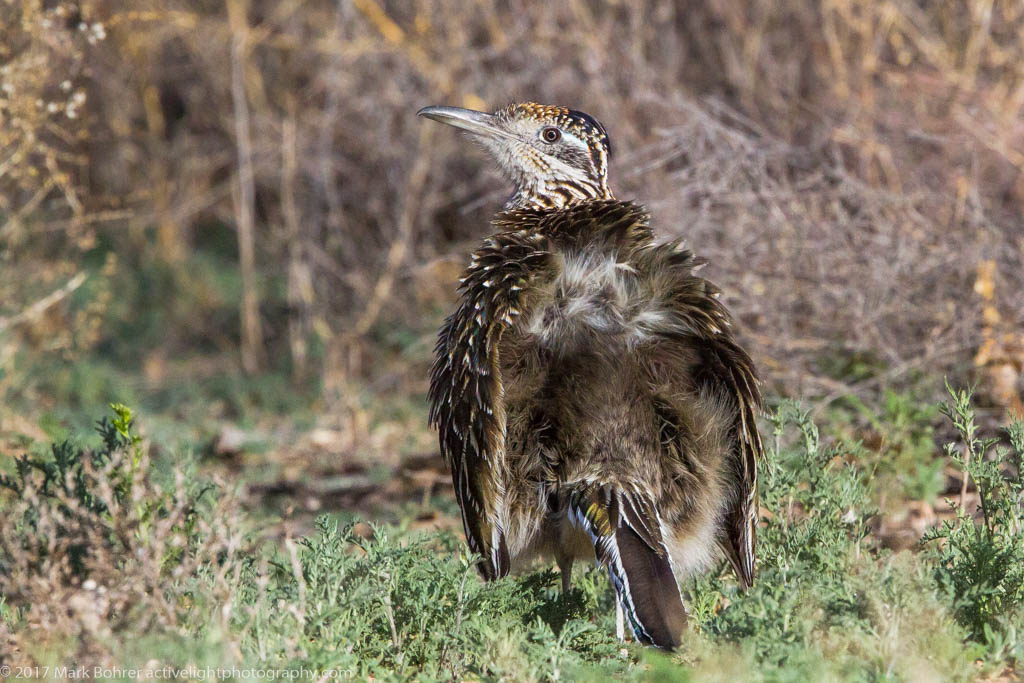 Greater roadrunner having a bad hair day Rio Grande Nature Center, Albuquerque Roadrunners blend with their surroundings while they dine on lizards, small desert insects, small rodents like mice, and anything else they can find. Their carnivorous habits help keep those populations to a level the limited resources will support. And enough grasses and small shrubs grow to hide and feed desert cottontails and black-tailed jackrabbits, like this cottontail doing an evening hangout near Mountainair, New Mexico. 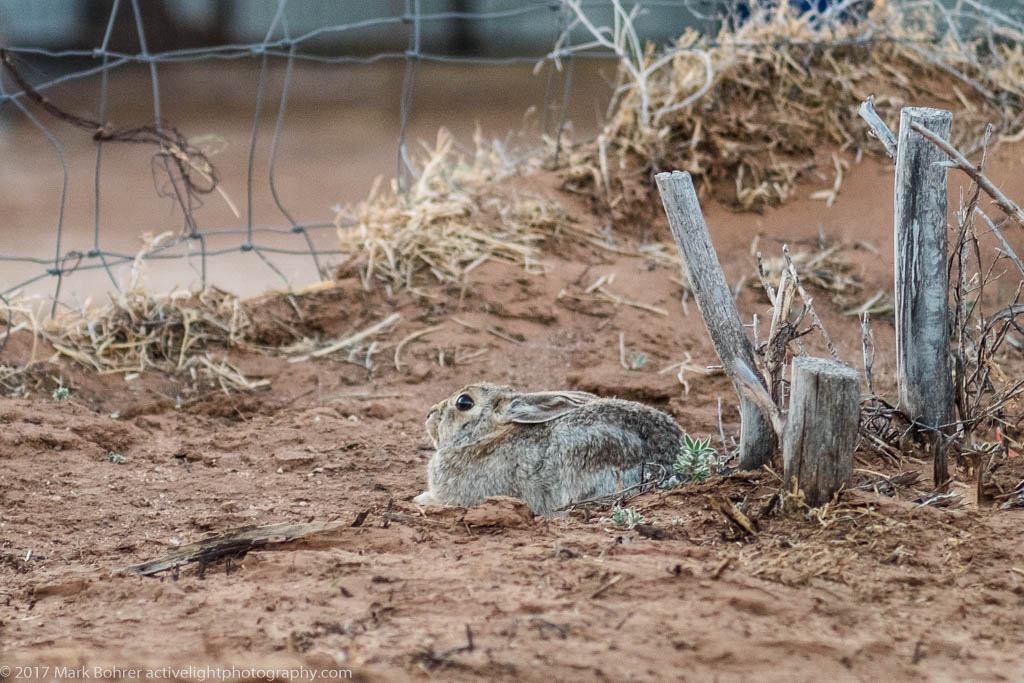 Desert cottontail hiding in plain sight, Mountainair, New Mexico 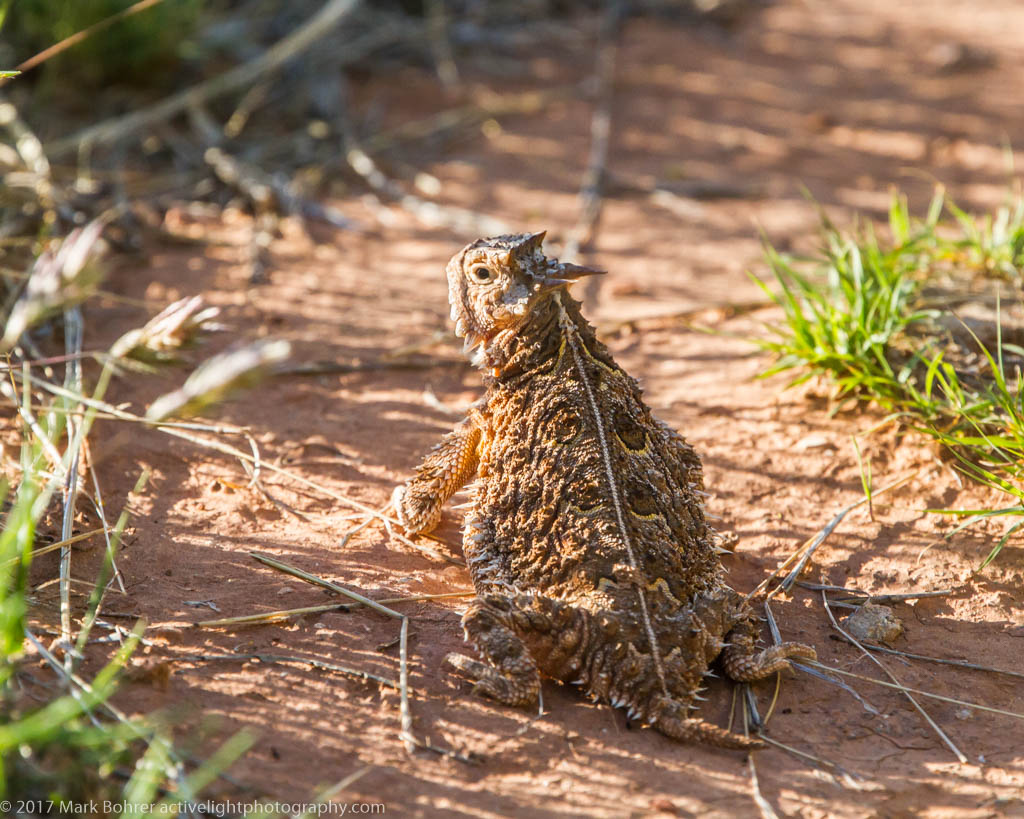 Texas Horned Lizard, Palo Duro Canyon, Texas Texas horned lizards look so much like their surroundings that you really have to watch the big picture for subtle movement to find them. Out of the corner of my eye, I saw motion near my campsite in Palo Duro Canyon, south of Amarillo, Texas. I had to look a couple times before I could make out the spiny guy in the picture. 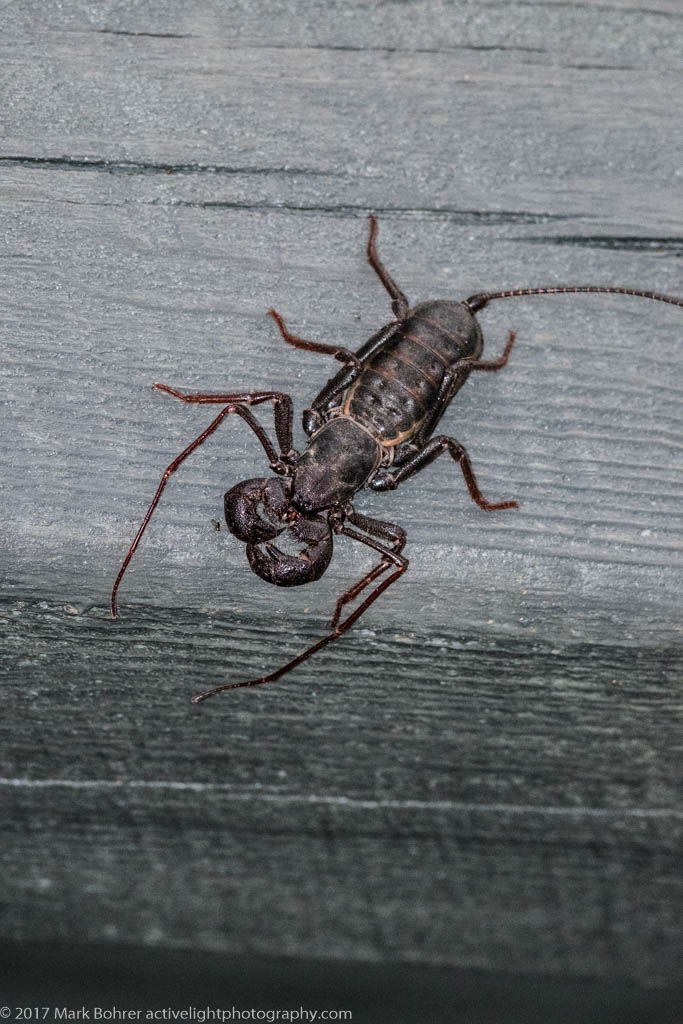 Whip scorpion, Albuquerque, New Mexico Whip scorpions hide in their burrows during the day, and come out to hunt small insects at night. You might spook at their scary appearance, but they reduce the roach and cricket populations. This one was lurking over my front porch late one afternoon. 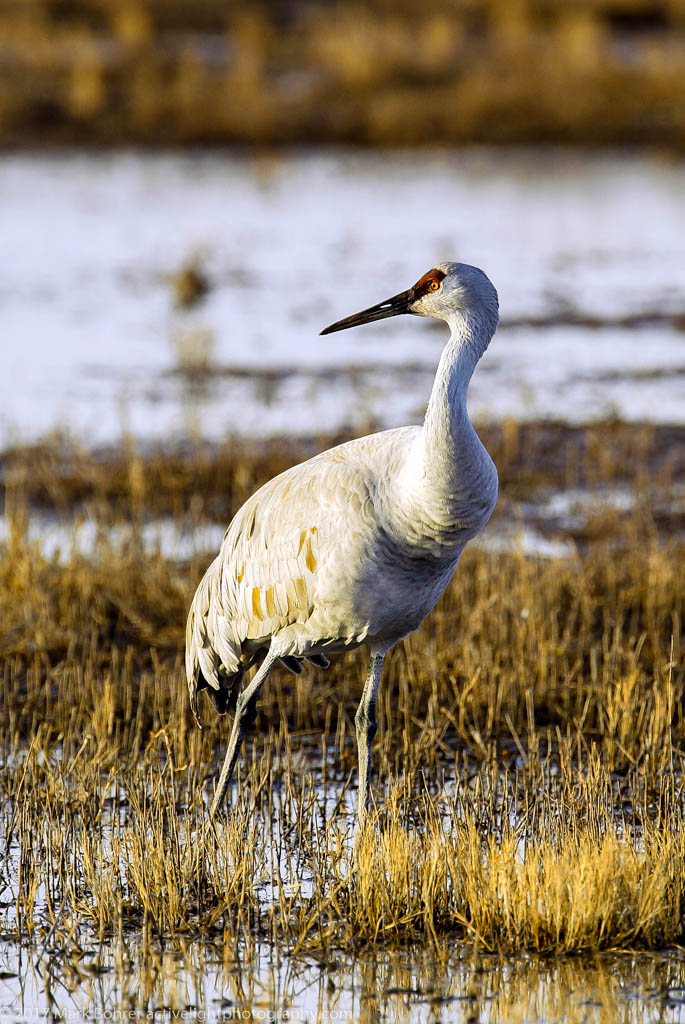 Sandhill crane, Bosque del Apache, New Mexico 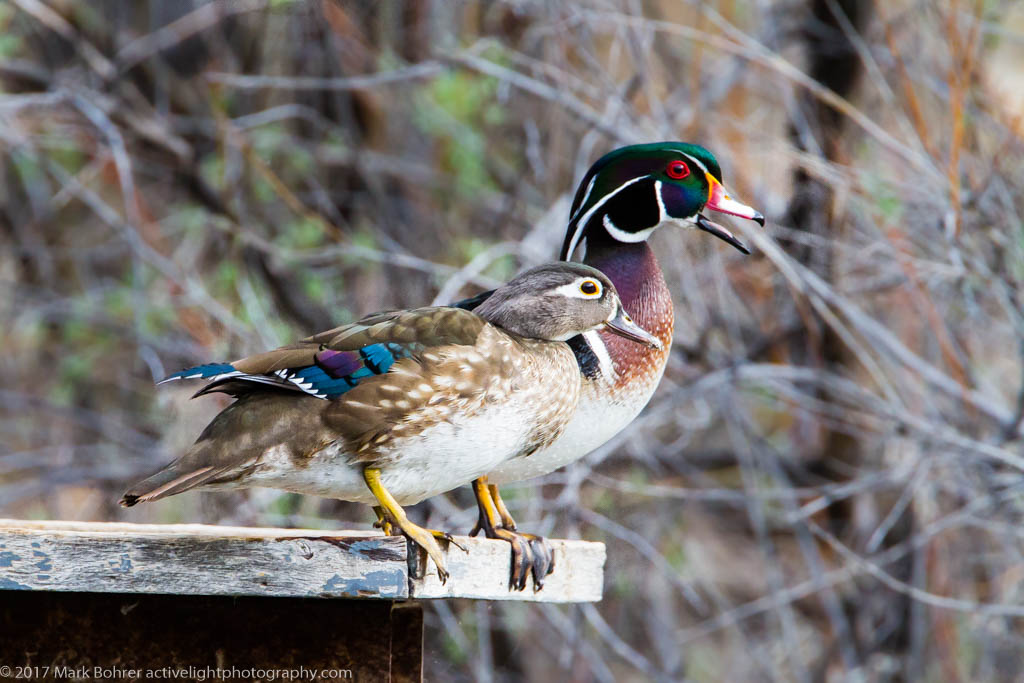 Wood duck couple, Rio Grande Nature Center, Albuquerque, New Mexico Water Draws Everything Humans and wildlife both need regular water sources to survive. Fortunately, rivers cut most North American deserts and spawn rich green belts. Look for the line of green trees and shrubs across a desert landscape, and you’ll find a riparian zone full of wildlife. You’ll see ducks, cranes and geese in Bosque del Apache, and at Albuquerque’s Rio Grande Nature Center, just two riparian zones in New Mexico. 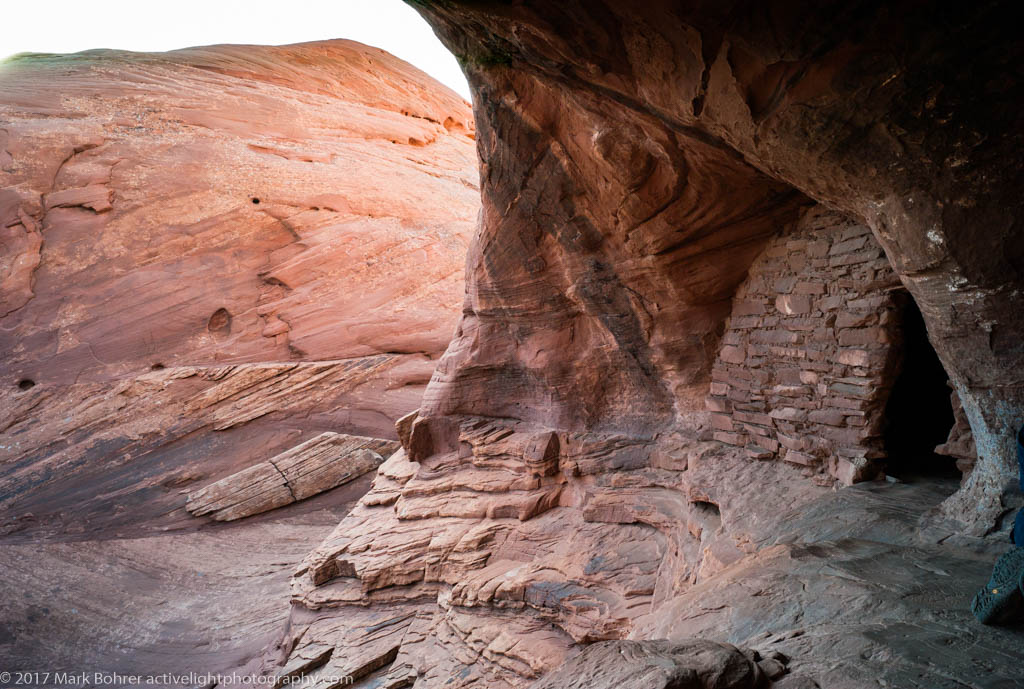 1,000-year-old desert shelter near Monument Valley, Utah If it’s headed for 100+ degrees at mid-day, you don’t want to go out there. After your early morning hunt, you wait out the heat in shelter until early evening. If you absolutely have to go out, you’ll stick to the shade as much as you can, whether you’re human or wildlife. That’s another reason why March-April or October-November are great times to be out looking for curve-billed thrashers or greater roadrunners 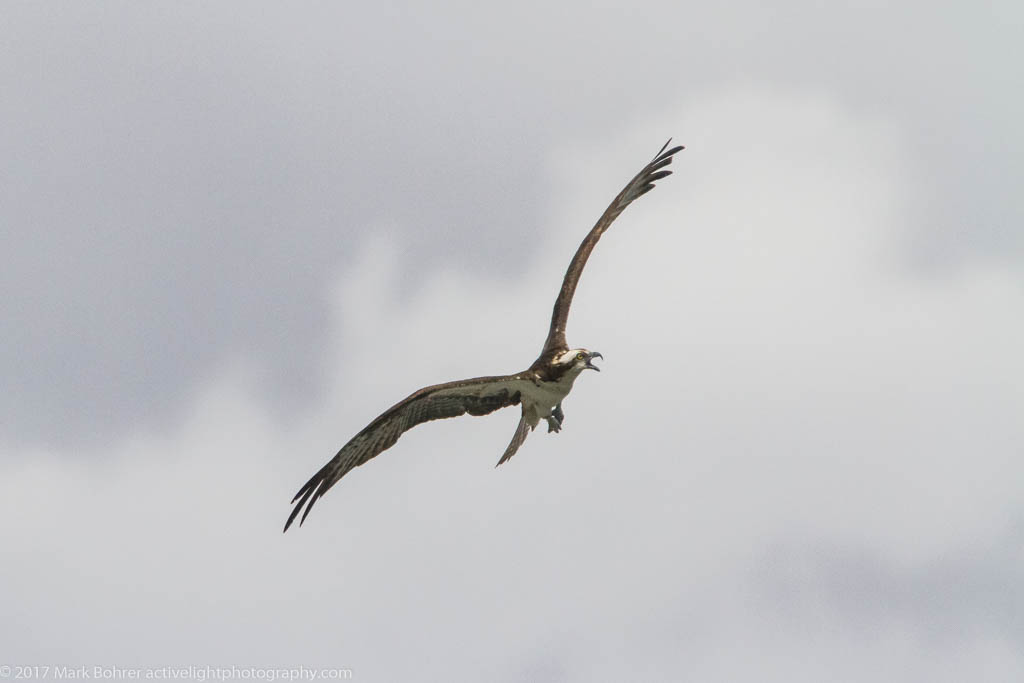 Osprey soaring over Flaming Gorge dam, Utah Human Alterations and Other Attractions We’ve altered the landscape a lot in recent years. You’ll find osprey soaring and hunting over dammed reservoirs that weren’t there 60 years ago. But that’s really no different from the ditches, check dams and irrigated fields made by the Chacoan Anasazi 1000 years ago. We’ve been changing the land for our own use for centuries, and wildlife take advantage of our work. 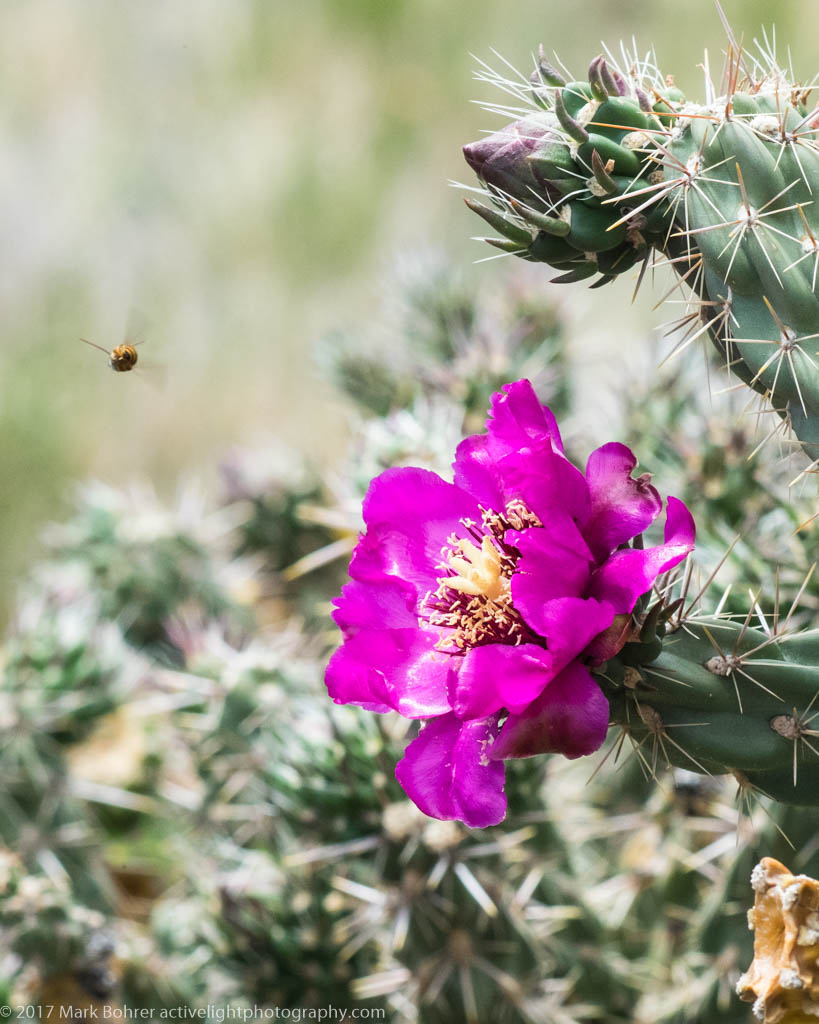 Bee and blooming cane cholla, Sandia foothills, New Mexico Bright colors and pollen attract insects, who in turn attract their own predators. After monsoon rains and early fall showers, everything flowers with blooming bees and butterflies everywhere. 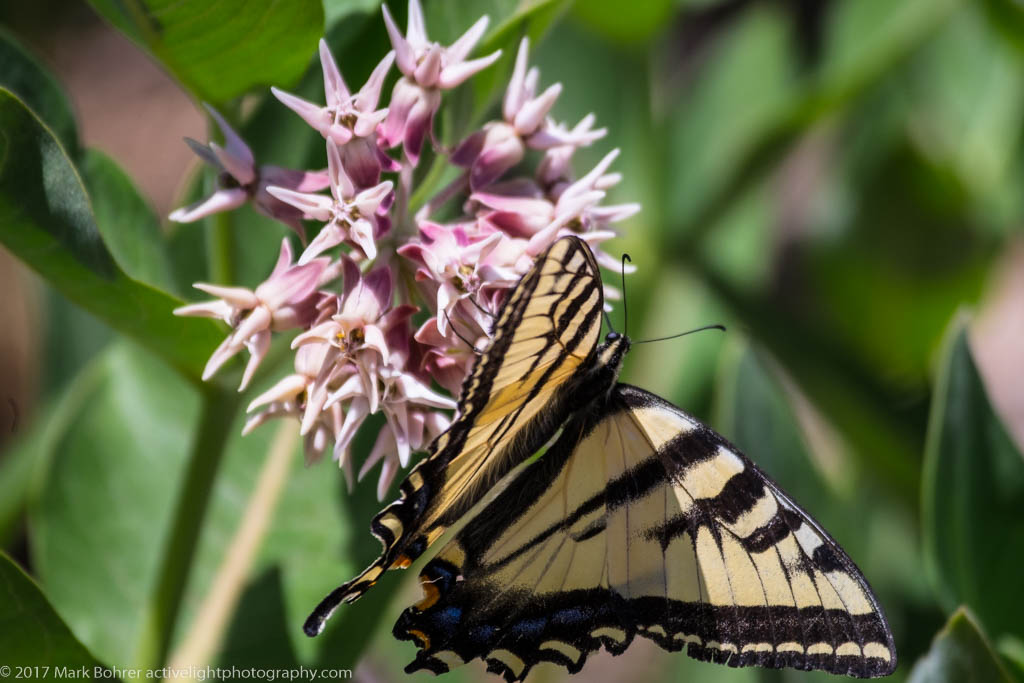 Western Tiger Swallowtail near Questa, New Mexico So don’t write off the desert for wildlife. Especially after a rain, near water, or in cooler fall temperatures, you’ll find plenty of wildlife shooting opportunities. Shot Notes Mirrorless cameras are changing the wildlife game. I used Canon’s FD 100-300mm f/5.6L on a Fuji X-E2 for many of these shots. I get results good enough for casual posts after cropping, but for publishable stuff, I need more lens. My usual walk-around wildlife carry is Canon’s EF 400mm f/4 DO IS on an EOS 7D. If I’m after a particular species, I’ll use the 7D on a tripod-mounted EF 500mm f/4L IS, with or without an older EF 1.4X II teleconverter. I may also put the 400mm on a second tripod with my EOS 1D mk II backup camera if I’m going to be in one place for awhile. The 1D mk II’s 8MP sensor has made it obsolete, but mine still works, so I use it as a backup when I don’t have to walk too far. Even the 7D camera produces files that don’t look as sharp as they could on big screens or prints, so there may be an EOS 7D mk II in my future. I won’t buy another EOS 1-series camera. Besides the high cost and depreciation, they weigh a ton. There may also be a Fuji X-T2 in my future, with its 24MP sensor and tiltable LCD. That may make pictures a little sharper than those from the X-E2, according to reviews I’ve seen. Especially in the desert, you need water and a hat. I’m follically-challenged, so I always wear either a ball cap or a boonie hat. I always carry at least one 0.8 liter (27oz) water bottle. The trick is to remember to drink it. More Information iBird Pro app, retrieved from https://itunes.apple.com/us/app/ibird-pro-guide-to-birds/id308018823?mt=8 Bosque del APache National Wildlife Refuge, retrieved from https://www.fws.gov/refuge/bosque_del_apache/ Palo Duro Canyopn State Park, retrieved from http://www.palodurocanyon.com/ Thelyphoninae (Whip Scorpion), retrieved from https://en.m.wikipedia.org/wiki/Thelyphonida Flaming Gorge Dam, retrieved from https://www.usbr.gov/uc/rm/crsp/fg/index.html Rio Grande Nature Center, retrieved from http://www.emnrd.state.nm.us/spd/riograndenaturecenterstatepark.html R. Gwinnett Vivian and Bruce Hilpert, The Chaco Handbook, University of Utah Press, Salt Lake City, 2002. How I Photograph Wildlife – Part I, retrieved from http://www.activelightphotography.com/blog/?p=4428 How I Photograph Wildlife – Part II, retrieved from http://www.activelightphotography.com/blog/?p=4514 |
(408) 483-3782
Curious about how to shoot ruins?(408) 483-3782

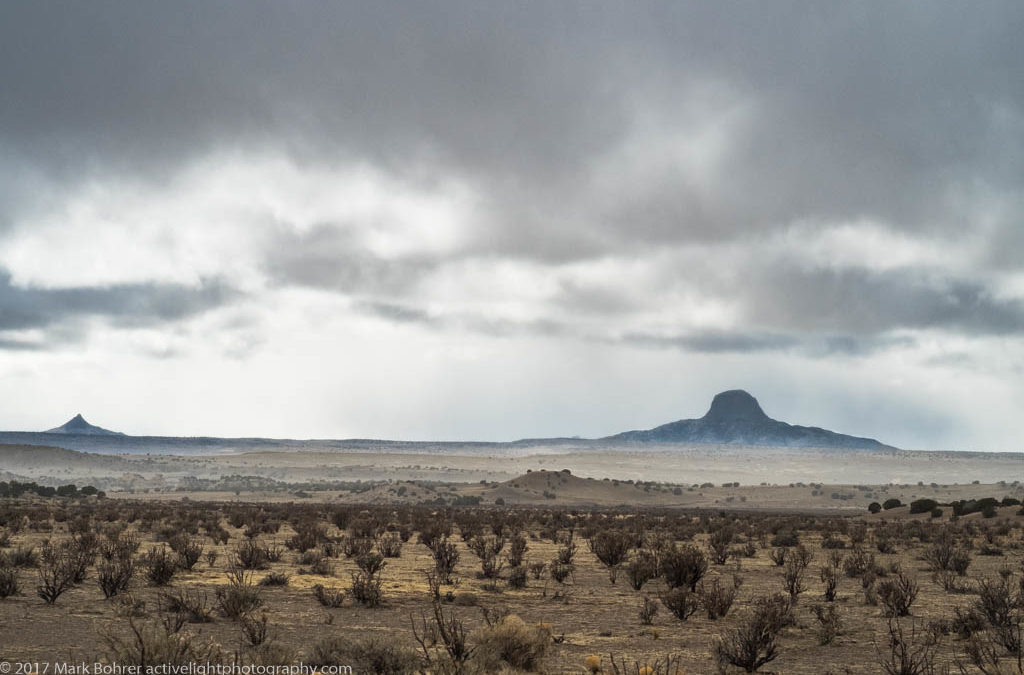
Recent Comments